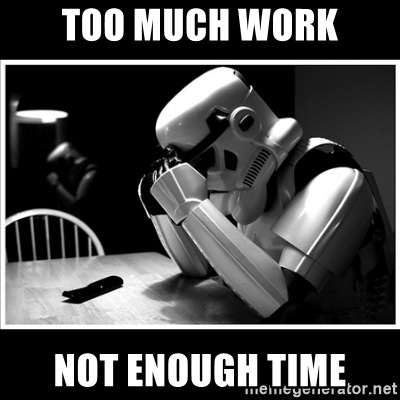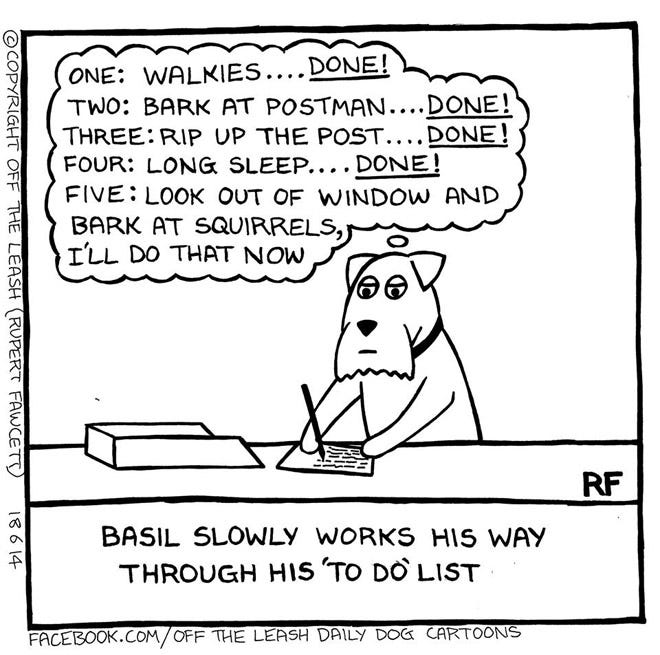Prioritization frameworks: When you don't have enough ⌚ to do everything.
[This is the last newsletter of 2020. Thanks to all of you who subscribed. I’ve learned a lot through these writings. I want to personally wish you and your families a happy holiday! If you’d like, leave me a note. See you in 2021.]
Every product manager faces this problem. Too many problems/ideas/solutions to fix/implement/test and there isn’t enough time, money, or resources to do it all. Deciding what to work on is hard. Getting everyone to agree on what to work on is harder. You need to get everyone onboard on using a prioritization framework. Let me show you how.
What is a prioritization framework?
A systematic way of evaluate activities to determine the rank order of importance. The rank order then determines which activities to work on.
Why have a prioritization framework?
A good framework ensures you’re consistently analyzing different factors when evaluating each activity. It reduces unspoken biases and 🧠💨.
Secondly, picking one framework and teaching everyone ensures we’re all talking from the same perspective. It’s unproductive and tiring to have a discussion when you’re talking from one perspective while the other person it talking from an entirely different perspective and neither of you know it. It’s feels like two trains passing through the night.
Like a decision-making framework, the prioritization framework improves the chance you’re working on the right problem/idea/solution at the right time.
How to use RICE prioritization frameworks
There are many prioritization frameworks, but RICE is a good one that balances fidelity of information with ease of use. If you’ve used RICE before, my model slightly modifies the scoring to make it easier while sacrificing a little fidelity.
Evaluate each project against four criteria:
REACH: How many customers or users will this project make better? This is a positive, numerical value.
IMPACT: What is the level of value each customer or user will receive. This is an estimate on a 5 point scale with 5 as most value.
EFFORT: What is the level of effort to complete this project? Also 5 point scale with 5 being most effort.
CONFIDENCE. What is your general confidence level in your estimates for Reach, Impact, and Effort? This is a value between 0 to 1 with 1 = 100% confident in estimates. This acts as a weight.
Calculate a score for every project. Follow the formula.
Rank order your activities based on the final score.
Principles for good RICE prioritization framework
Teach everyone about the RICE prioritization frame. As I mentioned, there are many prioritization frameworks. What’s important isn’t picking the right one, but having everyone use the same framework. This is never 100% possible, but the more people that adopt the usage, the more value you’ll get out of the conversations. You can then change or modify the framework after a majority of people start using it.
Articulate a baseline project for scoring IMPACT, EFFORT or CONFIDENCE. Each individual has a different anchoring point. For example, my 5 for IMPACT maybe your 3. To address this variability, think of an average project/problem/idea/solution you worked on. Use 20/20 hindsight to define that project as the benchmark 3 for IMPACT, EFFORT, and 0.5 CONFIDENCE. Now, when you evaluate new projects, you have something to compare against (i.e., is this project as impact or more impactful?). Make sure everyone knows about this baseline.
Don’t take averages. If multiple individuals are going through the RICE prioritization frame and individually ranking projects, that’s great. But don’t take the average score across individuals.
This is a lazy way to placate everyone. Instead, ask the most optimistic estimator for each category to try to convince the least optimistic person. In the above case, Sarah needs to convince Luke for REACH, IMPACT, and CONFIDENCE. Jamal has to convince Luke on EFFORT. If the person isn’t able to convince someone to change their mind, then you have to use the lower value. This approach prevents those who are overly optimistic or boastful from skewing the score. It also encourages dialogue because maybe there is information Sarah has that warrants the higher value. Luke has the option of agreeing to Sarah’s value or increasing only slightly. Again, go with the lowest value during the conclusion.
You should follow the RICE rank 90% of the time. The framework has problems. For example, RICE ranked don’t take into account of sequencing of projects. Maybe one project/activity needs to be solved before another. So you may need to move a project up or down, based on other factors. But if you’re consistently re-ranking projects, then you should consider using either another prioritization framework or just pick projects at random.
If in doubt, default to 0.25 for confidence score. Generally, estimates are wrong and significantly wrong. We overestimate REACH and IMPACT while underestimating EFFORT. Even if you’d worked on a similar project before, there are likely different people at your current company. Thus, when it’s a repeated problem with a known solution, I usually advise a confidence score of 0.5. This will help you identify readily the 1 or 2 projects with very high confidence scores.
Use it for narrowing do opportunities or ideas. A quick and low cost way to practice using the RICE prioritization framework is right after running a brainstorming session. You have a large list of ideas of varying types. Set aside time to apply the RICE prioritization framework in evaluating each idea. It’ll help you identify the rank order in which you’d want to further explore any ideas.
Source:






